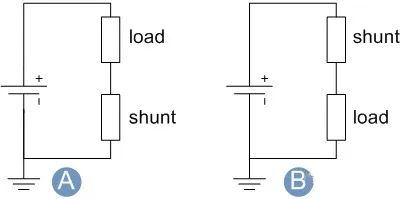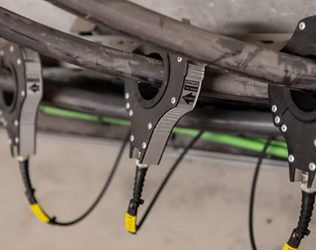Terminal block application is widely used in different industry such as Automobile manufacturing industry, Building Automation, etc. Read this article to know more about terminal blocks applications.
Terminal blocks, also known as terminal strips and connection plates, are electrical components used to connect and fix wires. They are widely used in power systems, electronic equipment, mechanical devices and other fields. It has the advantages of simple structure, easy use, safety and reliability, and is an indispensable component in the power system.

6 Terminal blocks applications
Terminal blocks are used in various industries, and the main application areas include:
In modern cars, the electrical system is becoming increasingly complex, carrying key functions such as engine control, lighting control, and safety systems. Terminal blocks play a vital role in tightly connecting wires and cables from components such as engines, sensors, and actuators to ensure stable current transmission and accurate signal transmission.
Automobile manufacturing industry
In automobile circuits, terminal blocks are used to connect various wires and cables to achieve circuit switching and signal transmission.
• Various types to meet different needs: There are many types of terminal blocks used in the automotive manufacturing industry, including screw type, spring type, PCB type, etc., which can meet the needs of different connection methods and usage environments. For example, in the high temperature and high vibration environment of the engine compartment, screw type terminal blocks with excellent high temperature resistance and vibration resistance are often used; while in the case of limited space inside the car body, spring type terminal blocks with small size and easy plugging and unplugging are used.
• Reliable connection to ensure driving safety: Automobile terminal blocks need to withstand harsh environmental tests such as engine vibration and temperature changes, so they must have excellent mechanical strength and reliability. High-quality terminal blocks are made of high-quality materials and undergo rigorous testing and certification to ensure that the connection is firm and not easy to loosen, and to prevent circuit failures caused by poor contact, providing reliable protection for the safe driving of the car.
• Intelligent interconnection helps automobile upgrades: With the development of automobile intelligence, automobile terminals are also evolving in a more intelligent direction. For example, terminals with data transmission function can realize data sharing between automobile parts, providing a basis for functions such as autonomous driving and vehicle networking.

Building Automation
In smart buildings, terminal blocks are used to connect various sensors, actuators and control devices in building control systems to achieve intelligent management of buildings.
In smart buildings, the building control system (BAS) is like the nerve center of the building, which manages subsystems such as lighting, air conditioning, and security to create a comfortable, safe, and efficient indoor environment for people. The terminal block is an indispensable connection component of the BAS, which transmits and distributes signals and power from sensors, actuators, controllers and other devices.

Power systems
Power systems, terminal blocks are widely used in power systems and are indispensable components of power systems. It has the advantages of simple structure, easy use, safety and reliability, and plays an important role in the power generation, transmission, distribution and power consumption of power systems.
Power generation link: In power plants, terminal blocks are used to connect generators, exciters, switch cabinets and other equipment to achieve the generation and transmission of electric energy.
Power transmission link: In transmission lines, terminal blocks are used to connect wires, lightning rods, ground wires and other components to achieve long-distance transmission of electric energy.
Power distribution link: In substations and distribution rooms, terminal blocks are used to connect transformers, circuit breakers, disconnections and other equipment to achieve the distribution and control of electric energy.
Power consumption link: At the user end, terminal blocks are used to connect meters, distribution boxes, switches and sockets and other equipment to achieve the final delivery and use of electric energy.

Process control
In the process control industry, terminal blocks are used to connect various instruments, sensors, actuators and control equipment to achieve automated control of the production process.
Application scenarios: In the automatic control systems of petrochemical, metallurgical, electric power, food and beverage, pharmaceutical and other industries.

Transportation system
In the transportation system, terminal blocks are used to connect traffic facilities such as signal lights, signs, and monitoring equipment to achieve intelligent management of traffic.
Application scenarios: In the control and monitoring systems of road traffic, railway traffic, air traffic and other fields.

Mechanical equipment

In mechanical equipment, terminal blocks are used to connect motors, sensors, control devices and other components to achieve control and operation of mechanical equipment.
Application scenarios: In various industrial equipment such as industrial robots, CNC machine tools, textile machinery, and printing machinery.
Conclusion
Terminal blocks are an indispensable component in the power system. They are easy to connect, safe and reliable, and easy to maintain, and are widely used in various industries. With the development of power systems and technological advances, the functions and performance of terminal blocks will continue to improve, providing important guarantees for the safe and reliable operation of power systems.






